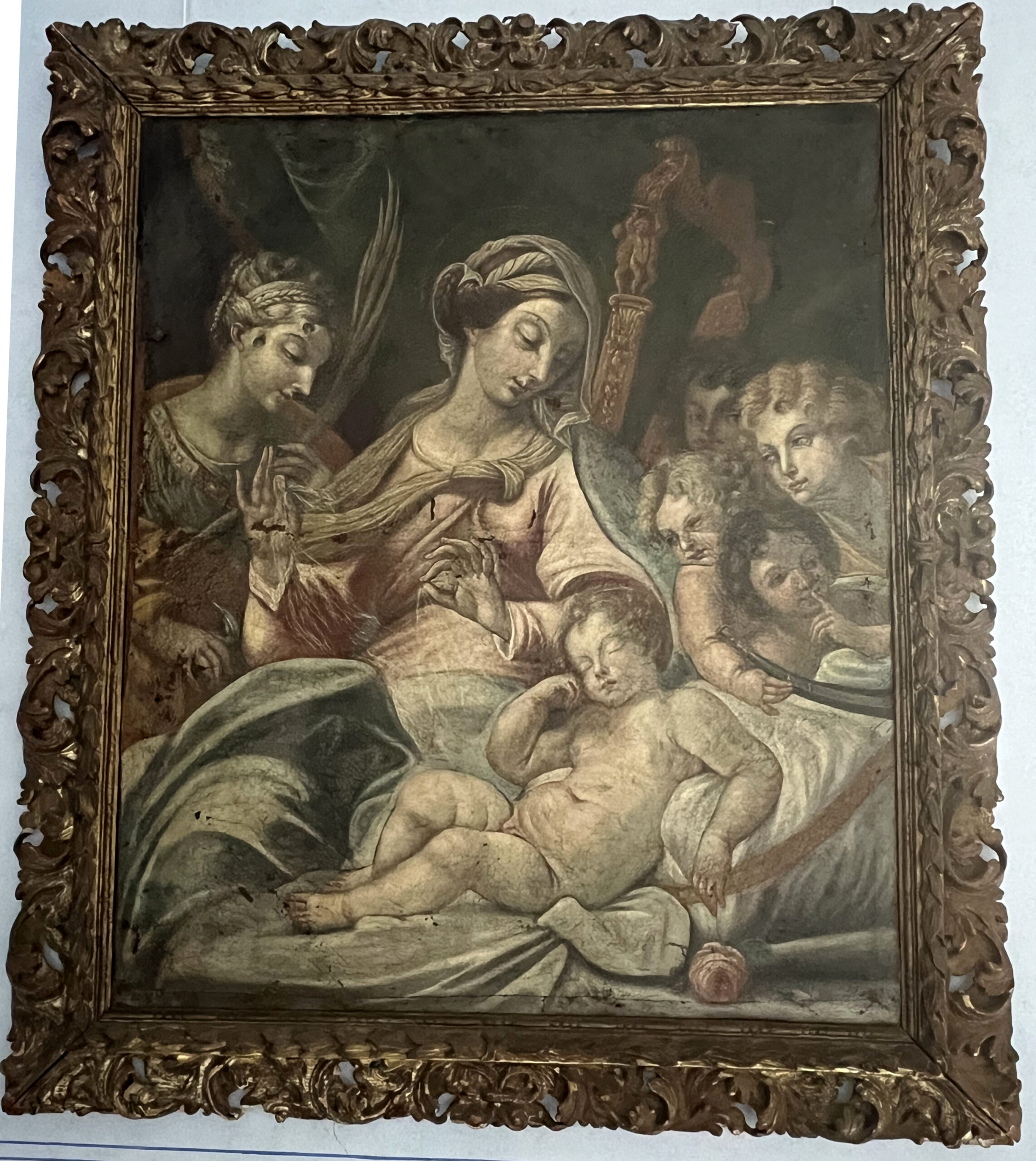This canvas, set in a rich coeval frame of carved and gilded wood, is a copy of a work by Carlo Maratta (1625-1713), an important Roman painter who succeeded in blending classicism and baroque present in Rome between the seventeenth and eighteenth centuries. Perhaps it was the commissioner himself, Bishop Ventimiglia, who suggested the model.
Note the detail of the transparent veil that the Virgin removes as if to show her Son, portrayed nude to emphasize his true humanity and asleep with a veiled reference to his passion and death.
The presence of the rose, recurring in many similar depictions, is to be linked to the symbolism related to the Virgin Mary, “mystical rose“.

